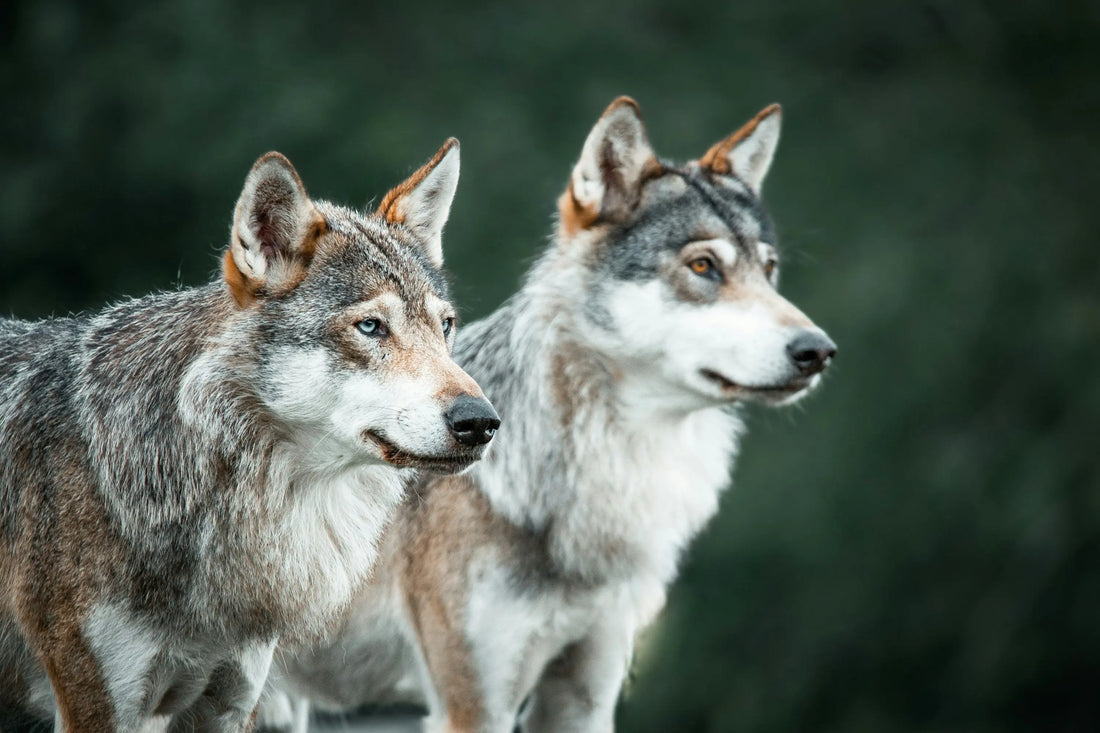
Where did dogs originally come from?
Share
The Origin of Dogs: How Wolves Became Our Best Friends
It was probably Germany or Central Europe.
Louie, full name Ludwig, came to us from Germany originally and, it turns out, so did every other dog according to some new research. It suggests that modern dogs may have evolved from wolves in Germany or Central Europe. But how did howlin’ wolves become our cuddly critters and why did we domesticate them anyway?
The origin story: From wolves to dogs
Dogs are descendants of grey wolves (Canis lupus), but the journey from wild predator to loyal pet was anything but simple. While it’s still debated where the first dogs were domesticated, there’s strong evidence that the earliest known dog fossils were found in Bonn-Oberkassel, Germany, dating back around 14,200 years ago. These fossils were discovered buried alongside humans, which suggests that early humans had already begun to see dogs as companions, not just wild animals.
Studies of ancient dog DNA have further backed up this claim. Genetic analysis of modern dogs and ancient dog remains suggests that modern dogs share common ancestry with a wolf population that lived in this region. Some researchers believe that dogs may have been domesticated from a specific population of grey wolves that existed in Central Europe, and not just from any wolf population.
While some theories suggest that dogs were domesticated in multiple locations around the world (including East Asia and the Middle East), the evidence for Germany and Central Europe is particularly strong. It’s possible that early domesticated dog populations from different regions eventually interbred, creating the diversity we see today.
How were dogs domesticated?
The domestication of dogs didn’t happen overnight. It was a slow, gradual process that took thousands of years. Early humans didn’t necessarily "train" wolves to become dogs. Instead, the process likely began with natural selection.
Wolves that were more tolerant of human presence were able to scavenge food from human settlements, gaining an advantage over more fearful, aggressive wolves. These "tamer" wolves bred with one another, passing down genes that made them less aggressive and more social. This self-selection process laid the groundwork for domestication.
Once humans began to see the benefits of having wolves around (like protection, companionship, and help with hunting), they may have actively encouraged the relationship. Humans could have provided food, shelter, or protection in exchange for the wolves' services, fostering a mutually beneficial arrangement.
Why don’t dogs look like wolves?
Unlike the huge variety of shapes, sizes and colours of modern dogs, early domesticated ones probably looked quite similar to wolves. However, over thousands of years, as people began selecting dogs for specific traits like friendliness, coat colour or hunting ability, their physical appearance started to change. This slow but significant process eventually led to the diversity of dog breeds we see today.
Interestingly, one of the most famous experiments on domestication involved Siberian foxes. Russian scientists selectively bred foxes for friendliness and tameness. Within just a few generations, the foxes began to develop floppy ears, wagging tails, and even playful behaviour—traits seen in domesticated dogs. This experiment provided a window into how the domestication of wolves may have occurred.
How did early dogs help us?
Early dogs weren’t just companions, they played vital roles in human survival. As early as 15,000 years ago, humans were still nomadic hunter-gatherers, and dogs served as partners in hunting. Their keen sense of smell and speed allowed them to track and chase prey, making hunts more efficient. This partnership was mutually beneficial as humans gained better access to food and dogs received scraps and protection.
But hunting wasn’t their only job. Early dogs likely served as guards for human settlements, alerting people to the presence of predators or rival human groups. Their keen hearing and natural territorial instincts made them perfect watchmen. Over time, this role became more refined as humans selectively bred dogs with strong protective instincts, laying the groundwork for breeds like guard dogs and herding dogs.
Dogs may also have played a spiritual or ceremonial role in early human societies. The Bonn-Oberkassel dog, for example, was buried alongside two human skeletons, suggesting it held a special place in their community. Other archaeological sites have found similar burials, indicating that dogs weren’t just "working animals" but were seen as valued companions worthy of a formal burial.
Were dogs domesticated more than once?
While Germany and Central Europe are strong contenders for the "birthplace" of dogs, some researchers believe that dogs may have been domesticated more than once, in multiple regions around the world. There is genetic evidence to suggest that dog-like populations existed in Asia and the Middle East, possibly developing independently before eventually interbreeding.
One study proposed a “dual origin” hypothesis, suggesting that dogs were first domesticated in East Asia and later in Europe. Over time, these distinct dog populations may have merged as humans migrated and populations mixed.
While the evidence for multiple domestication events is still under investigation, it’s clear that dogs have been deeply intertwined with human lives for thousands of years, no matter where in the world they began.
Dogs have been our hunters, guards, and friends for thousands of years and they’re still playing those roles today. While they may no longer help us hunt for dinner, they’re still helping us feel safe, loved, and never alone.
If you love learning how dogs think and thrive, explore our range of all-natural supplements designed to support your dog’s long-term health and happiness. Shop all supplements.
